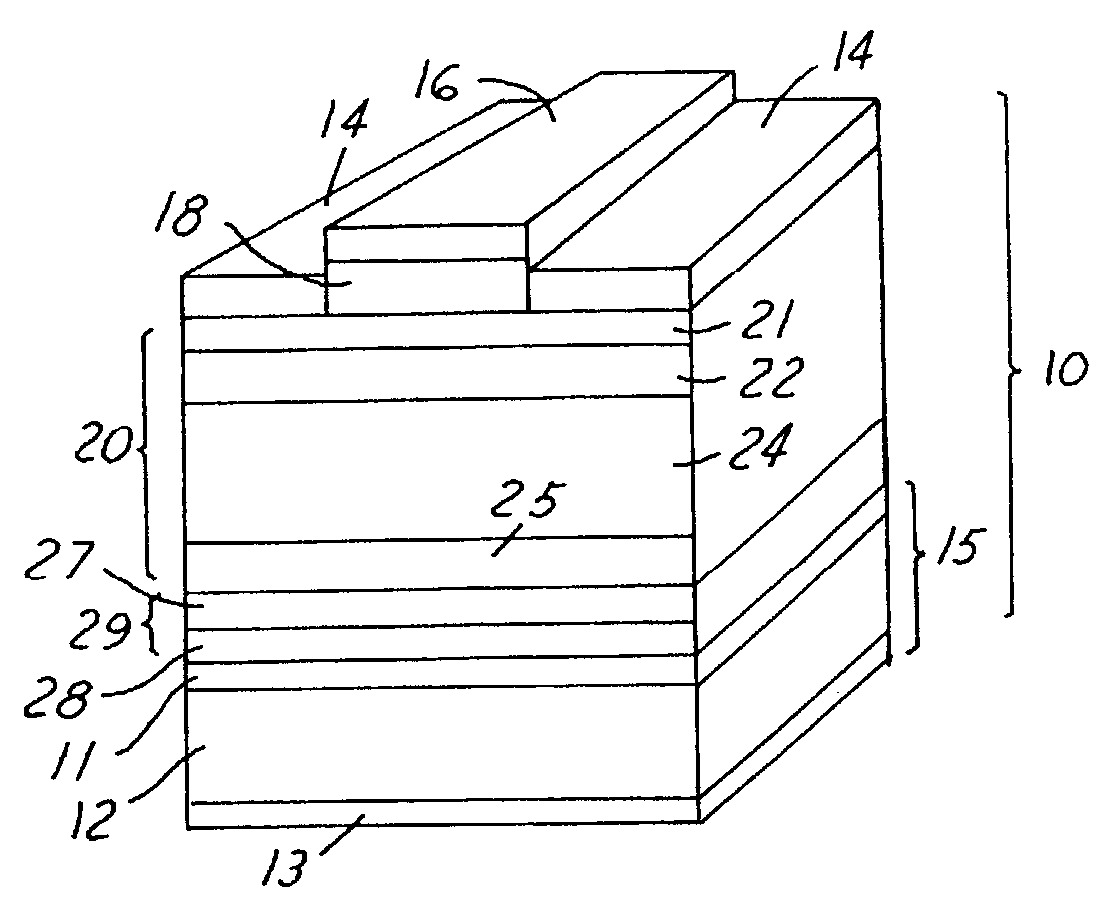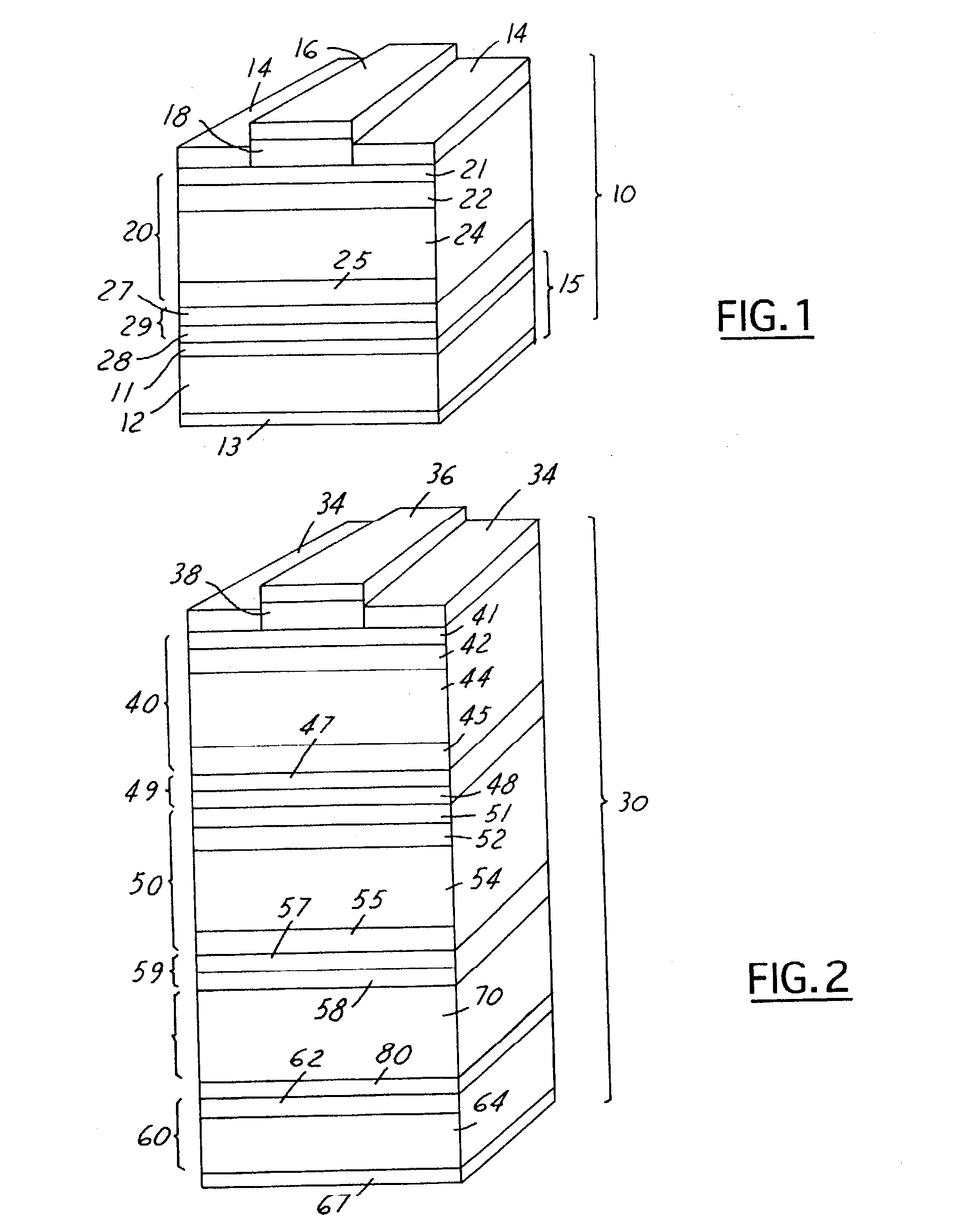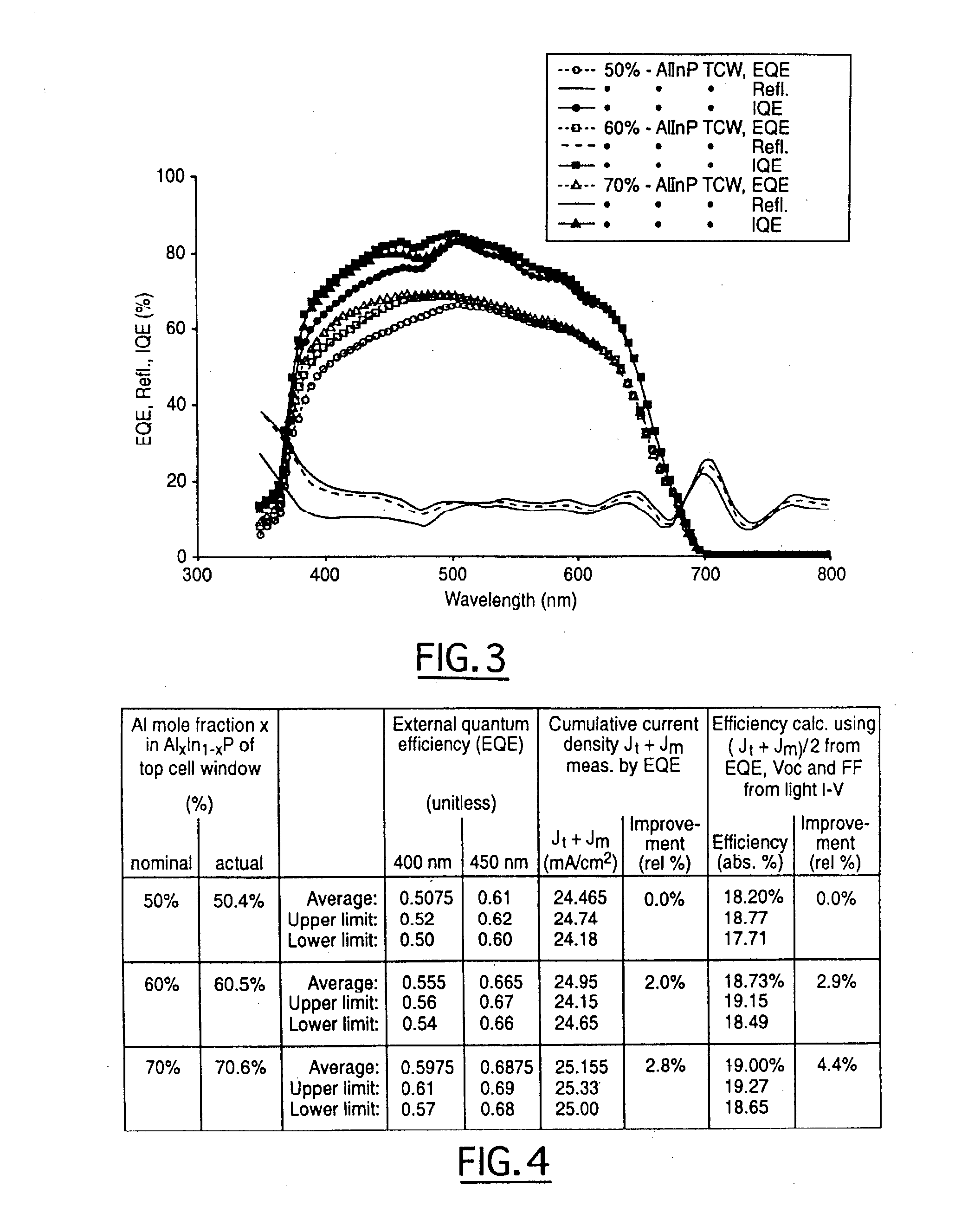Wide-bandgap, lattice-mismatched window layer for a solar conversion device
a technology of lattice-matched window layer and wide bandgap, which is applied in the direction of semiconductor devices, electrical devices, photovoltaics, etc., can solve the problems of strong absorption of light in the window, low bandgap available in lattice-matched window materials, etc., to improve surface passivation, enhance light trapping effect, and increase optical path length
- Summary
- Abstract
- Description
- Claims
- Application Information
AI Technical Summary
Benefits of technology
Problems solved by technology
Method used
Image
Examples
Embodiment Construction
[0015]Single-Junction Photovoltaic Cells
[0016]It is understood that the term “lattice mismatched” refers to the intentional mismatching of material lattice constants between layers of the photovoltaic devices described herein. The term “lattice mismatched,” as one of ordinary skill appreciates, is substantially different than “lattice matched” or “nearly lattice matched.” Also, the term “material lattice constant” refers to the lattice constant of the material in a free-standing layer (i.e. when the material is “relaxed” or “fully relaxed”). In addition, the term “lattice mismatch” of a first layer with respect to a second layer is defined as the difference between the material lattice constant of the first layer and the material lattice constant of the second layer divided by the material lattice constant of the second layer. The term “lattice mismatched,” as one of ordinary skill appreciates, has a greater degree of mismatch and is thus substantially different than “lattice matche...
PUM
 Login to View More
Login to View More Abstract
Description
Claims
Application Information
 Login to View More
Login to View More - R&D
- Intellectual Property
- Life Sciences
- Materials
- Tech Scout
- Unparalleled Data Quality
- Higher Quality Content
- 60% Fewer Hallucinations
Browse by: Latest US Patents, China's latest patents, Technical Efficacy Thesaurus, Application Domain, Technology Topic, Popular Technical Reports.
© 2025 PatSnap. All rights reserved.Legal|Privacy policy|Modern Slavery Act Transparency Statement|Sitemap|About US| Contact US: help@patsnap.com



